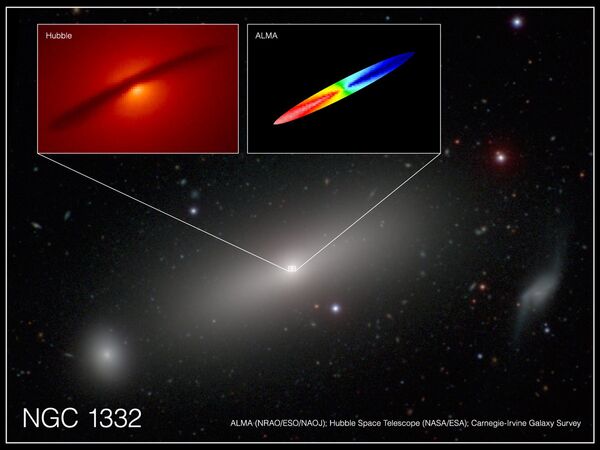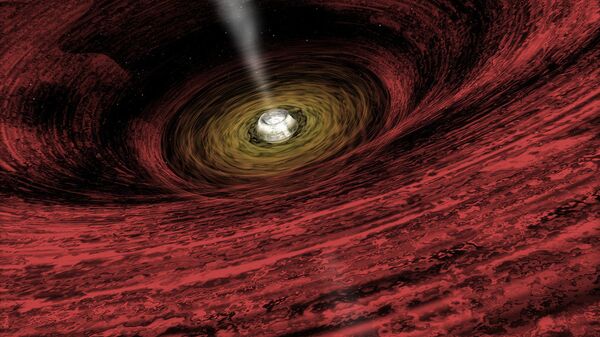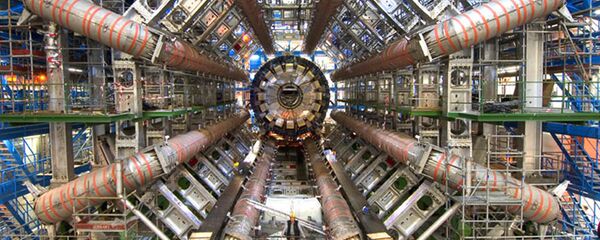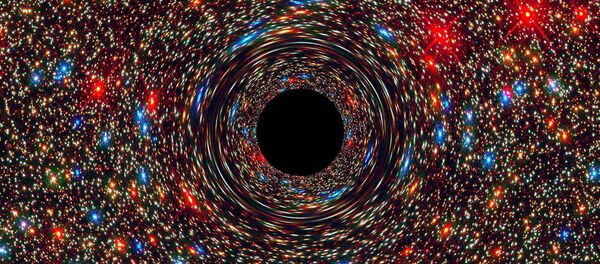They measured the size of the black hole by studying ALMA's observations of carbon monoxide emissions from a giant disc of cold gas approximately 16 light years across which is orbiting the black hole.
They also measured the speed of the gas, and found it to move at more than 500 kilometers per second near the disk's center.
The scientists then compared these data with simulations and calculated that the black hole has a mass 660 million times greater than our Sun, plus or minus ten percent, and about 150 times the mass of the black hole at the center of the Milky Way.
Previous studies of NGC 1332 with ground- and space-based telescopes gave wildly different estimates for the mass of this black hole, ranging from 500 million to 1.5 billion times the mass of the Sun.

It is the first demonstration that ALMA's 66 antennas can be used to map out the rotation of gas disks in galactic centers at a higher resolution than other ground- and space-based telescopes, including the Hubble Space Telescope.
The astronomers believe their technique can be applied to many other galaxies to measure the masses of supermassive black holes with great precision, and they have submitted a proposal to use ALMA to observe other massive black holes.
"This has been a very active area of research for the last 20 years, trying to characterize the masses of black holes at the centers of galaxies," which scientists believe will help them to understand how galaxies form and evolve.
"This is a case where new instrumentation has allowed us to make an important new advance in terms of what we can say scientifically."



